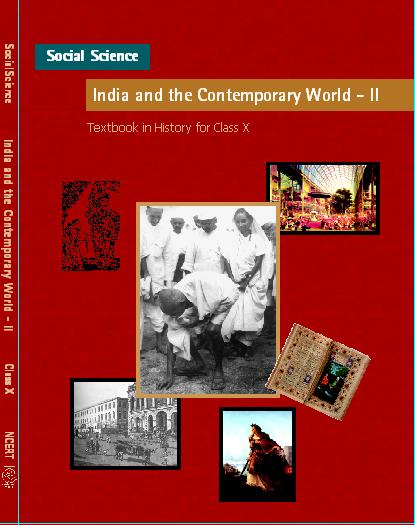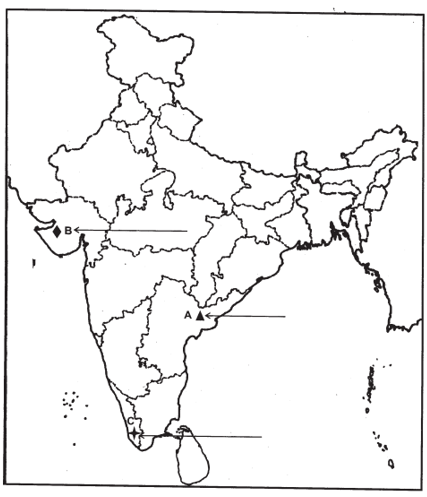CBSE Question Paper 2011 class 10 Social Science conducted by Central Board of Secondary Education, New Delhi in the month of March 2011. CBSE previous year question papers with solution are available in myCBSEguide mobile app and cbse guide website. The Best CBSE App for students and teachers is myCBSEguide which provides complete study material and practice papers to CBSE schools in India and abroad.
Question Paper 2011 class 10 Social Science

Class 10 Social Science list of chapters
Economics
- Development
- Sector of Indian Economy
- Money and Credit
- Globalization of Indian Sector
- Consumer Rights
Geography
- Resources and Development
- Forest and Wildlife Resources
- Water Resources
- Agriculture
- Minerals and Energy Resources
- Manufacturing Industries
- Lifelines of National Economy
History
- The Rise of Nationalism in Europe
- The Nationalist Movement in Indo China
- Nationalism in India
- The Making of a Global World
- The Age of Industrialisation
- Work Life and Leisure
- Print Culture and The Modern World
- Novels Society and History
Civics
- Power Sharing
- Federalism
- Democracy and Diversity
- Gender Religion Caste
- Popular Struggle and Movements
- Political Parties
- Outcomes of Democracy
Last Year Question Paper Class 10 Social Science 2011
GENERAL INSTRUCTIONS:
(i) The question paper has 36 questions in all. All questions are compulsory.
(ii) Marks are indicated against each question.
(iii) Questions from serial number 1-16 are multiple choice questions (MCQs) of1 mark each. Every MCQ is provided with four alternatives. Write the correct alternatives in your answer book.
(iv) Question from serial number 17to29 are 3 marks questions. Answer of the questions should not exceed 80 words each.
(v) Question from serial number 30 to 34 are 4 mark questions. Answer these questions should not exceed 100 words each.
(vi) Question number 35 is a map question of 2 marks from History and Question number 36 is a map question of 3 marks from Geography.
(vii) Attach the filled-up maps inside the answer-sheet.
1. Which one of the following statements is false regarding the Act of Union 1707?
(A) It was an agreement between England and Scotland.
(B) It was an agreement between England and Ireland.
(C) It resulted in the formation of the ‘United Kingdom of Great Britain.’
(D) It gave England control over Scotland.
OR
Which one of the following was not an impact of the Great Depression of l930’s on Vietnam?
(A) Vietnam was occupied by Japan.
(B) The price of rice and rubber fell.
(C) There was an increase in unemployment.
(D) There were rural uprisings.
2. Which one of the following statements is false regarding the Zollverein formed in 1834?
(A) It abolished trade barriers.
(B) It reduced the number of currencies.
(C) It had most of the German states as members.
(D) It abolished feudal system.
OR
Which one of the following statements is false about HO Chi Minh?
(A) Ho Chi Minh was the Chairman of the Democratic Republic of Vietnam.
(B) He founded the Vietnamese Communist Party.
(C) He took control of South Vietnam after Vietnam split.
(D) He gave help to the National Liberation Front.
3. Why did Gandhiji withdraw the Non-Co-operation Movement?
(A) Gandhiji realised that people were losing interest in the movement.
(B) Gandhiji felt the movement was turning violent in many places.
(C) Some Congress leaders wanted to participate in elections to Provincial Council.
(D) Some Congress leaders wanted more radical mass agitations.
4. Which one of the following statement is false about Alluri Sitaram Raju?
(A) He claimed he had special powers.
(B) He was inspired by the non-co-operation movement.
(C) He believed in the principle of non-violence advocated by Gandhiji.
(D) He persuaded people to give up drinking.
5. Which one of the following is the finest quality of iron ore?
(A) Haematite
(B) Limonite
(C) Magnetite
(D) Siderite
6. Limestone is the basic raw material for which one of the following industries?
(A) Iron and steel industry
(B) Fertilizer industry
(C) Cement industry
(D) Automobile industry
7. Which one of the following countries is giving stiff competition to India with regard to jute industry?
(A) Brazil
(B) Bangladesh
(C) Philippines
(D) Thailand
8. The first class mail includes which one of the following?
(A) Book packets
(B) Registered newspapers
(C) Envelops and cards
(D) Periodicals and journals
9. Backward and Minorities Community Employees Federation (BAMCEF) is an example of which one of the following?
(A)Public interest group
(B) A movement for equality
(C) A sectional interest group
(D) A political party
10. Which one of the following was the main aim of the movement in Nepal in 2006?
(A) To reduce the power of the king.
(B) To re-establish democracy in Nepal.
(C) To promote one party rule.
(D) To stop military coup.
11. Which one of the following political parties seeks to represent and secure power for Dalits, OBC’s and Adivasis?
(A) Bahujan Samaj Party
(B) Bharatiya Janata Party
(C) Forward Bloc
(D) Janata Da1(S)
12. Which one of the following is a foundational challenge of democracy?
(A) Ensuring greater power to local government.
(B) Keeping military away from controlling government.
(C) Extension of federal principle to all the units of the federation.
(D) Empowering women.
13. Why do banks keep a small proportion of the deposits as cash with themselves?
(A) To extent loan to the poor.
(B) To extend loan facility.
(C) To pay salary to their staff.
(D) To pay the depositors who might come to withdraw money.
14. The currency notes on behalf of the Central Government are issued by whom?
(A) State Bank of India
(B) Reserve Bank of India
(C) Punjab National Bank
(D) Central Bank of India
15. Globalisation does NOT involve which one of the following?
(A) Rapid integration between countries.
(B) More goods and services moving between countries.
(C) Increased taxes on imports.
(D) Movement of people between countries for jobs, education etc.
16. The district level court deals with the cases involving claims:
(A) upto Rs. 10 lakhs upto Rs. 20 lakhs
(C) between Rs. 20 lakhs to Rs. 1 crore
(D) exceeding Rs. 1 crore
17. Explain any three beliefs of the conservatism that emerged after 1815.
OR
Explain any three features of the “go east movement” in Vietnam.
18. Explain any three facts about the new economic situation created in India by the First World War.
19. How is energy an indispensable requirement of our modern life? Explain with three examples.
20. How does textile industry occupy a unique position in Indian economy? Explain giving any three points.
21. “The sugar mills are shifting towards southern and western states of India.” Support the statement giving three reasons.
22. Explain three ways under which pressure groups exert influence on politics.
23. How do democratic governments ensure transparency? Explain any three points.
24. Explain any three characteristics of democracy.
25. Explain with examples why some laws that seek to ban something are not very successful in politics.
26. Explain the three conditions that determine MNC’s setting up production in other countries.
27. Explain the role of government to make globalisation fair.
28. What is standardization of products? Mention any two organizations responsible for the standardization of products in India.
29. Consumers have the right to be informed about goods and services they purchase. Explain its three advantages.
30. Explain any four economic hardships that Europe faced in the 1830s.
OR
Explain the views of Paul Bernard regarding the economy of Vietnam.
31. How did cultural processes help in creating a sense of collective belongingness in India? Explain.
32. Explain the importance of air transport in India giving four points.
33. Explain any Your suggestions to reform political parties in India.
34. Describe any four advantages of ‘Self Help Groups’ for the poor.
35. Two features – A and B are marked in the given outline political map of India. Identify these features with the help of the following informational and write their correct names on the lines marked on the map.
(A) The place where Indian National Congress session of December 1920 was held.
OR
Locate and label the following items with appropriate symbols on the same map.
(i) Amritsar— The place where Jalianwala Bagh incient took place.
(ii) Champaran —The place of the indigo planters’ movement.
Note: The following questions are for the BLIND CANDIDATES only, in lieu of Question No. 35.
(35.1) Name the place where the Indian National Congress session was held in December, 1920.
(35.2) Name the place where the cotton mill workers satyagraha took place.
36. Three features —A, B and C are marked in the given outline political map of India. Identify these features with the help of the following information and write their correct names on the lines marked in the map.
(A) Coalmine
(B) Woollen industry
(B) International airport
OR
Locate and label the following items on the same map with appropriate symbols.
(i) Mohali —Software Technology Park
(ii) Bokaro —kon and Steel Industry
(iii) Paradeep — Sea Port
Note: The following questions are for the BLIND CANDIDATES only, in lieu of Question No. 36.
(36.1) Name the southern terminal station of the North South Corridor.
(36.2) In which state is the Rawat Bhata Nuclear power plant located?
(36.3) In which State is the Kandla port located.
Q.no. 35
Q.no. 36.
These are questions only. To view and download complete question paper with solution install myCBSEguide App from google play store or login to our student dashboard.
CBSE Question Paper 2011 class 10 Social Science
Download class 10 Social Science question paper with solution from best CBSE App the myCBSEguide. CBSE class 10 Social Science question paper 2011 in PDF format with solution will help you to understand the latest question paper pattern and marking scheme of the CBSE board examination. You will get to know the difficulty level of the question paper.
Previous Year Question Paper for class 10 in PDF
Question papers 2019, 2018, 2017, 2016, 2015, 2014, 2013, 2012, 2011, 2010, 2009, 2008, 2007, 2006, 2005 and so on for all the subjects are available under this download link. Practicing real question paper certainly helps students to get confidence and improve performance in weak areas.
- Mathematics
- Science
- Social Science
- English Communicative
- English Language and Literature
- Hindi Course-A
- Hindi Course-B
- Other Subjects
To download previous year question papers for class 10 Mathematics, Science, Social Science, English Communicative, English Language and Literature, Hindi Course A, Hindi Course B, and Other subjects; do check myCBSEguide app or website. myCBSEguide provides sample papers with solution, test papers for chapter-wise practice, NCERT solutions, NCERT Exemplar solutions, quick revision notes for ready reference, CBSE guess papers and CBSE important question papers. Sample Paper all are made available through the best app for CBSE students and myCBSEguide website.

Test Generator
Create question paper PDF and online tests with your own name & logo in minutes.
Create Now
Learn8 App
Practice unlimited questions for Entrance tests & government job exams at ₹99 only
Install Now
